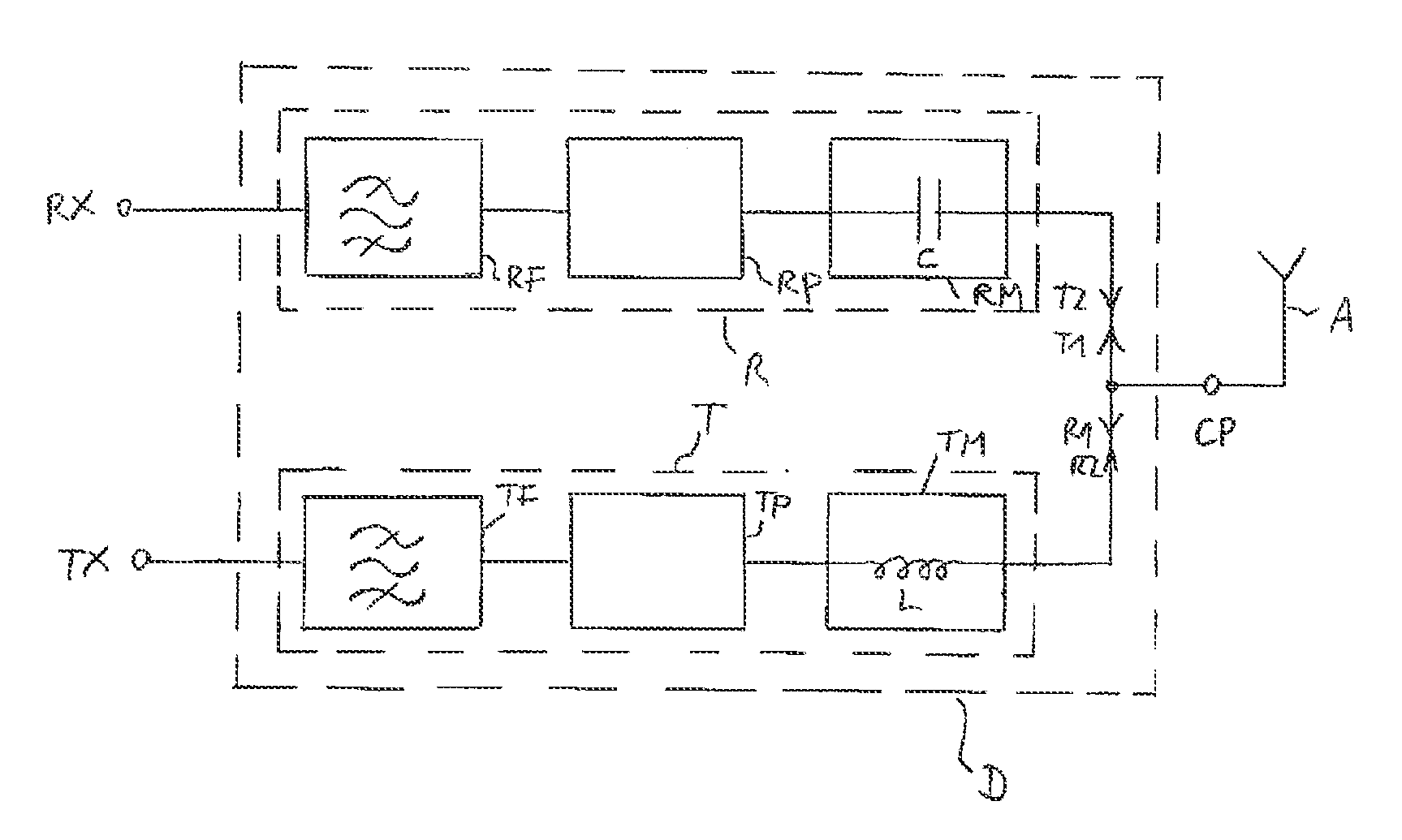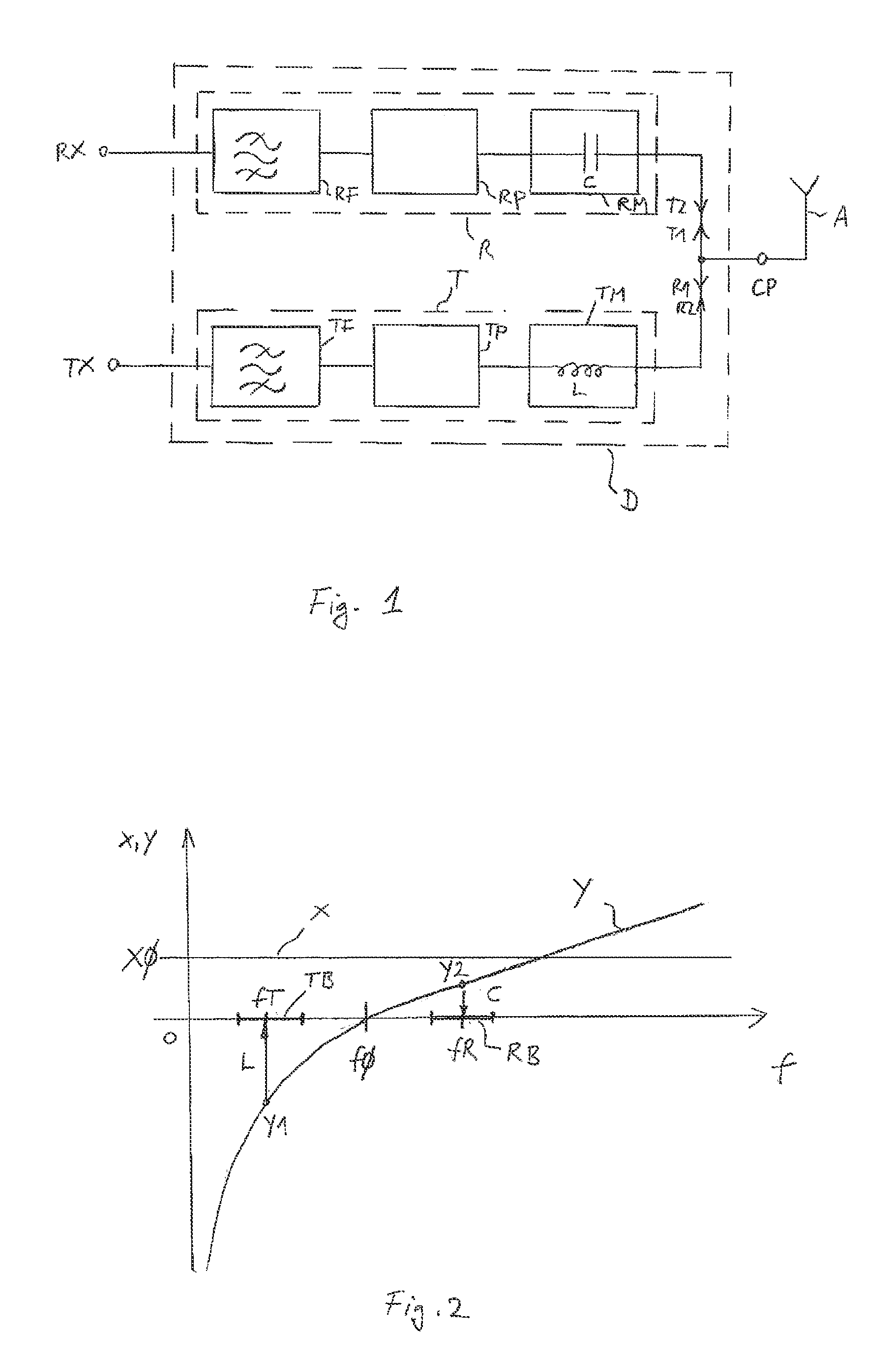Communication System and Method for Transmitting and Receiving Signals
a communication system and receiver technology, applied in the field of communication systems, can solve the problems of reducing the frequency of the impedance of the antenna is typically variable, etc., and achieves the effects of improving reducing the cost of the antenna, and increasing the efficiency of the communication system
- Summary
- Abstract
- Description
- Claims
- Application Information
AI Technical Summary
Benefits of technology
Problems solved by technology
Method used
Image
Examples
Embodiment Construction
[0053]FIG. 1 shows a block diagram of an embodiment of the communication system. The communication system comprises a duplexer D having a reception port RX, a transmission port TX and a common port CP. An antenna A is coupled to the common port CP. The duplexer D allows full-duplex operation: signals having frequencies in a transmission band TB can be applied to the transmission port TX and transmitted by the antenna A while at the same time signals having frequencies in a reception band RB can be received by the antenna A and can be tapped off at the reception port RX. The same antenna A is used for simultaneously receiving and transmitting signals at different frequencies.
[0054]The duplexer D comprises a transmission branch T and a reception branch R. The transmission branch T and the reception branch R are connected by the transmission port TX and the reception port RX, respectively, and are coupled to one another and to the antenna A at the common port CP. The transmission branc...
PUM
 Login to View More
Login to View More Abstract
Description
Claims
Application Information
 Login to View More
Login to View More - R&D
- Intellectual Property
- Life Sciences
- Materials
- Tech Scout
- Unparalleled Data Quality
- Higher Quality Content
- 60% Fewer Hallucinations
Browse by: Latest US Patents, China's latest patents, Technical Efficacy Thesaurus, Application Domain, Technology Topic, Popular Technical Reports.
© 2025 PatSnap. All rights reserved.Legal|Privacy policy|Modern Slavery Act Transparency Statement|Sitemap|About US| Contact US: help@patsnap.com


